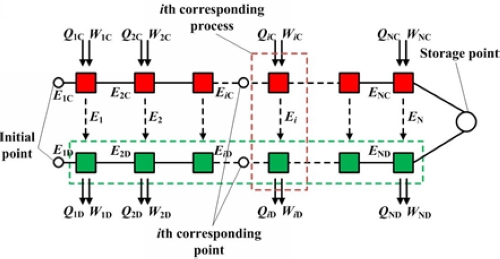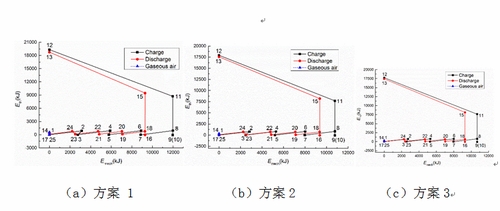
Figure 1. The corresponding point analysis model

Figure 2. Thermal enthalpy-mechanical map of a compressed air energy storage system
Power storage plays a key role in the large-scale access of renewable energy, peaking and filling of power systems, distributed energy systems, smart grids, and the Internet of energy. It has received increasing attention from scholars at home and abroad. Among various energy storage technologies, physical energy storage systems have the advantages of environmental friendliness, economy, and large scale, and have broad application prospects. The traditional optimization analysis method of physical energy storage system usually analyzes the system flow module-by-module, and often ignores the energy-related relationship between the energy storage process and the energy release process, and it is difficult to clearly reveal the energy coupling relationship between the processes. It is easy to overlook one and the other, and it is difficult to achieve global optimization.
Through the analysis of the process of physical energy storage system, it found that it has strong correspondence, such as the rising of water level in the pumped storage system and the process of water level drop, the energy storage and heat release process of the thermal storage system, and the air compression of the compressed air energy storage system. The expansion process and the flywheel energy storage system flywheel acceleration and deceleration process; at the same time not only the flow symmetry, system parameters also have a strong correspondence. Therefore, based on the correspondence characteristics of the physical energy storage system process, the Energy Storage R&D Center of the Institute of Engineering Thermophysics, Chinese Academy of Sciences takes the complex compressed air energy storage system as an example, and innovatively proposes a corresponding point analysis optimization algorithm (CPM). This method is extended to physical energy storage systems.
As shown in Fig. 1, the process of compressed air energy storage system has correspondence, and the process of symmetry of flow is called the corresponding process. The point of symmetry in the process is called the corresponding point, and the model divides the energy storage process and the energy release process into N parts. The processes correspond one by one, thus forming N corresponding processes (the i-th corresponding process shown in the dashed box in the figure) and N+1 corresponding points. In order to clearly express the transition and transfer properties of the system, a thermo-mechanical (Eth-Emech diagram) image method was proposed. Compared with the traditional optimization analysis method, the corresponding point analysis optimization algorithm has the following advantages: It can clearly reveal the energy transfer mechanism between energy storage and energy release process; It is conducive to explore the coupling relationship of different thermal processes; It is beneficial to obtain system performance improvement and The direction of optimization.
By adopting the corresponding point analysis and optimization algorithm, the efficiency of the compressed air energy storage system was improved by 9.2%. The research work was supported by the National Natural Science Foundation of China, the National Key Basic Research Development Program (973 Program), the Frontier Science Key Research Project of the Chinese Academy of Sciences, and the Beijing Science and Technology Plan Project. The relevant research results were published in Energy, Energy Conversion and Management, Applied Energy, etc. Journal.
Stud,Blind Standoff,Self Clinching Standoff,Thru-Hole Threaded Standoffs,Nut Standoff
Dongguan Tiloo Industrial Co., Ltd , https://www.sales-fastener.com